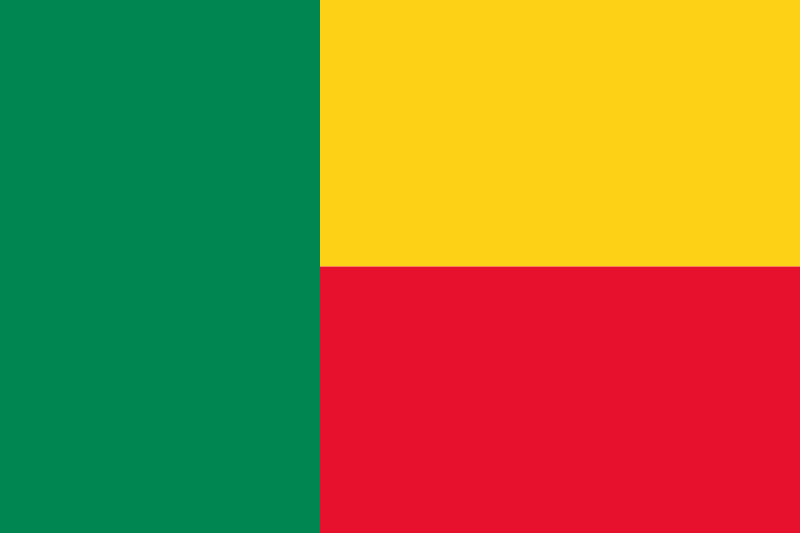Take a look at Benin travel guide and read what other travelers wrote about main destinations, culture, entertainment and general information.
If you have been in Benin, tell us what you liked best, so other tourist will have the chance to enjoy Benin's beauties and spend pleasant and relaxing holidays in Benin.
General information
Introduction
Benin, a small yet culturally rich country in West Africa, offers a unique blend of historical landmarks, vibrant traditions, and natural beauty. Known as the birthplace of Vodou and home to the ancient Kingdom of Dahomey, Benin attracts visitors with its fascinating history and welcoming locals.
General Information
- Capital: Porto-Novo (official), Cotonou (economic hub)
- Official Language: French
- Currency: West African CFA franc (XOF)
- Population: Approximately 13 million (2025 estimate)
- Time Zone: West Africa Time (GMT+1)
Top Attractions
- Ganvié: Dubbed the “Venice of Africa,” Ganvié is the largest stilt village in Africa, located on Lake Nokoué near Cotonou. Home to approximately 20,000 people, it offers unique insights into traditional lake life.
- Ouidah: Known as the spiritual capital of Vodou, Ouidah features the Temple of Pythons and the Slave Route, a historical path linked to the transatlantic slave trade. The town is also home to the annual Vodou Festival in January, a colorful celebration of the country’s spiritual traditions.
- Abomey Royal Palaces: A UNESCO World Heritage site, these palaces were once the center of the powerful Dahomey Kingdom. The site includes 12 palaces spread over 40 hectares, showcasing the rich history and culture of the region.
- Pendjari National Park: Part of the W-Arly-Pendjari Complex, this park is one of the best places in West Africa to spot wildlife, including elephants, lions, and hippos. It’s a UNESCO World Heritage site and offers excellent opportunities for safaris and birdwatching.
- Fidjrossè Beach: Located near Cotonou, this beach offers a relaxing spot for visitors to unwind by the Atlantic Ocean. It’s a popular destination for both locals and tourists, especially during weekends.
Culture and Traditions
Benin’s cultural heritage is vibrant and diverse, heavily influenced by the ancient Dahomey Kingdom and Vodou practices. Key cultural highlights include:
- Festivals: The annual Vodou Festival in Ouidah (January) is a significant event, attracting participants and observers from around the world. Other notable festivals include the Gelede Festival, celebrating the role of women in society.
- Cuisine: Beninese cuisine is known for its flavorful and spicy dishes. Staples include maize, yams, and rice, often accompanied by sauces made from vegetables, meat, or fish. Popular dishes include pounded yam (fufu) and peanut-based sauces.
- Art and Craft: Traditional textiles, bronze sculptures, and intricate wood carvings are common souvenirs. The country is also known for its vibrant music and dance traditions, including the use of drums and other percussion instruments.
Travel Tips
- Best Time to Visit: November to February, during the dry season, is ideal for wildlife viewing and cultural exploration. This period also coincides with major festivals, offering a deeper insight into local traditions.
- Getting Around: Motorcycle taxis (zemidjans) are a common and affordable mode of transport in cities. For longer distances, buses and shared taxis are available. It’s advisable to negotiate fares beforehand to avoid misunderstandings.
- Health and Safety: Ensure you have travel insurance and vaccinations, including yellow fever. It’s recommended to drink only bottled or boiled water and to take malaria prophylaxis, as the disease is prevalent in the region.
- Local Etiquette: Greetings are important in Benin. A simple handshake or a polite “bonjour” is appreciated. When visiting villages or sacred sites, it’s respectful to seek permission before taking photographs.
Fun Facts
- Benin is considered the cradle of Vodou, a religion practiced by millions worldwide. The religion plays a significant role in the country’s cultural and spiritual life.
- The country’s flag symbolizes peace (white), wealth (yellow), and the lush landscape (green). The green vertical band represents hope, the red horizontal band symbolizes courage, and the yellow horizontal band stands for wealth.
- Ganvié, the stilt village, was established over 300 years ago as a refuge from slave traders. The Tofinu people built the village to escape capture, as the Dahomey warriors were forbidden by religious custom from fighting on water.
Conclusion
Benin is a destination that combines history, culture, and natural beauty, making it a hidden gem for travelers seeking authentic experiences. Whether exploring the wildlife of Pendjari National Park or delving into the country’s spiritual heritage in Ouidah, Benin promises a journey full of discovery and wonder.
